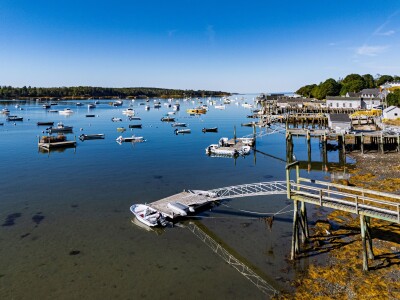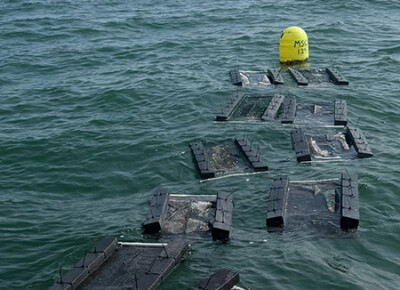When wooden traps ruled Maine waters, their designs were all over the place. "There as many ways to build a trap as there are lobstermen, but there's only one right way — and that's mine," one Downeast fisherman told National Fisherman in an article from 1984 that's highlighted in our April issue's Back When section on page 4.
That variety was supposed to end 30 years ago when the use of manufactured wire traps quickly spread. The preference for wire is easy to understand. It fishes better. Wire traps are more likely to land upright and don't bounce around on the bottom as much as wooden ones do. Wooden lobster traps were on their way out along with the tradition of lobstermen spending their winters in their basements building oak-lath traps for next season.
You'd think that would be it for wooden traps. But on the cover of the April issue with that item from 30 years ago, there's a wooden trap. The photo of lobstermen hauling up a wooden trap on the 45-foot Persevere was taken last year off Chatham, Mass. If wire traps are clearly better, why are wooden ones still in the water?
I tried to find out more about this while I was at the Maine Fishermen's Forum this weekend. I asked the lobster trap manufacturer at the booth next to ours if he knew of anyone still using wooden traps. From his visits to lobster fisheries on the East and West coasts, he said he knew of only one place where lobstermen held onto the tradition of using wooden traps, Canada's Prince Edward Island. They're traditionalists.
There's more that goes into traps than how well they fish. I watched people come over to inspect his wire traps. Some liked the runners on them, but one woman dismissed them, saying they'd cause the traps to slide all over the place if you stacked them onboard.
One lobsterman I talked to from Massachusetts said he only phased out the last of his wooden traps in the last couple years. He couldn't really tell me why he kept using them for so long. He just did. It reminded me of a conversation I had with a Dungeness crabber on the West Coast. He keeps using his lucky trap — even though it's old and battered and he has new ones that are supposedly better.
You can read more about traps in the April issue's profile of Eddie Heath, also known as Chesapeake Bay's crab pot king. If you work with traps you know there's always something to tinker with. Lately, Heath, who has been making crab pots for 40 years, has been experimenting with color. The most popular for the past few years have been pots in bright greens and yellows, which some crabbers believe help draw crabs toward their pots.
So what did I learn about traps? I'm thinking of looking into this further for a possible story, but I think for most fishermen, the quote from the Down East lobsterman in the 1984 article still rings true. Whatever works best for you is best.
Photo of Friendship Trap from the April 1984 issue of National Fisherman







